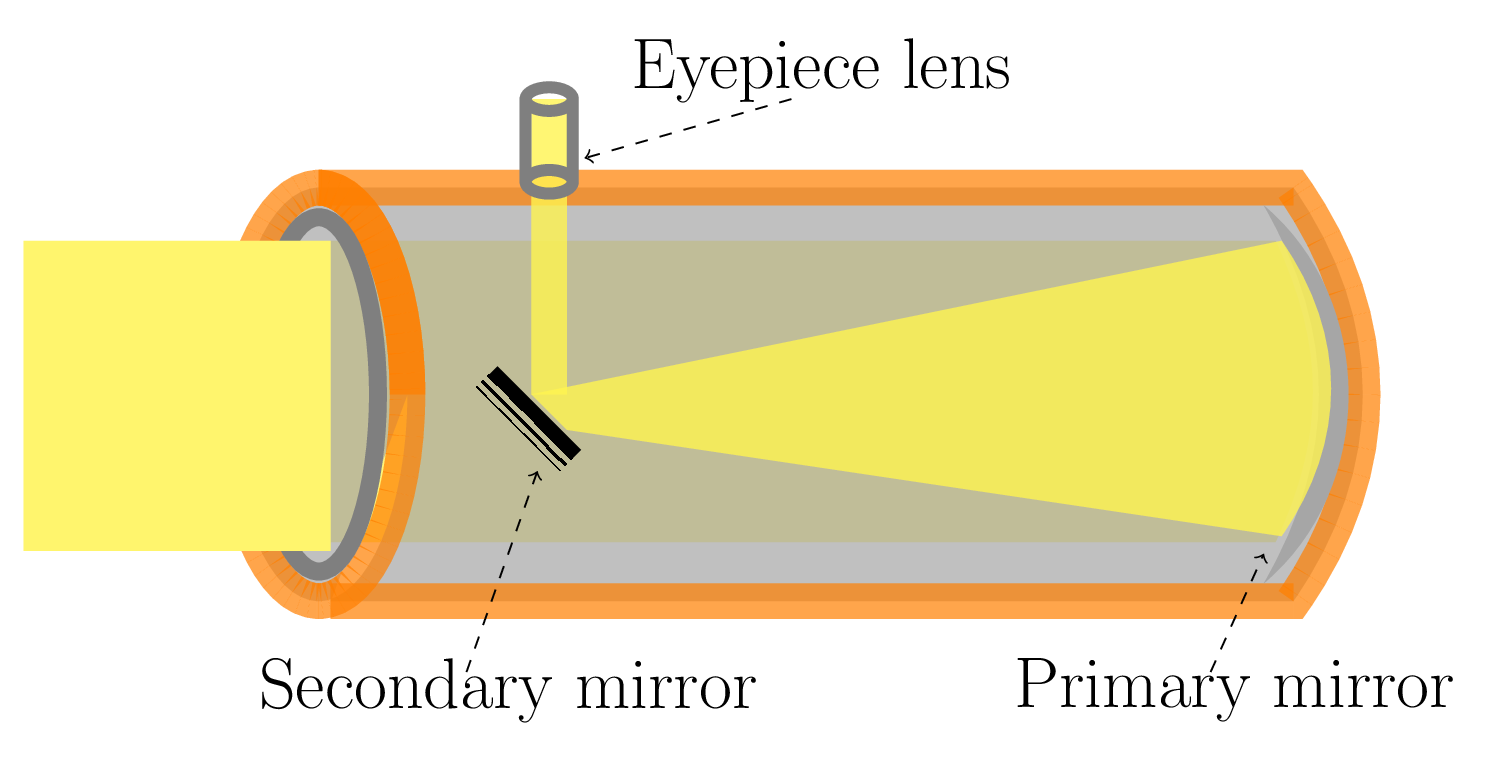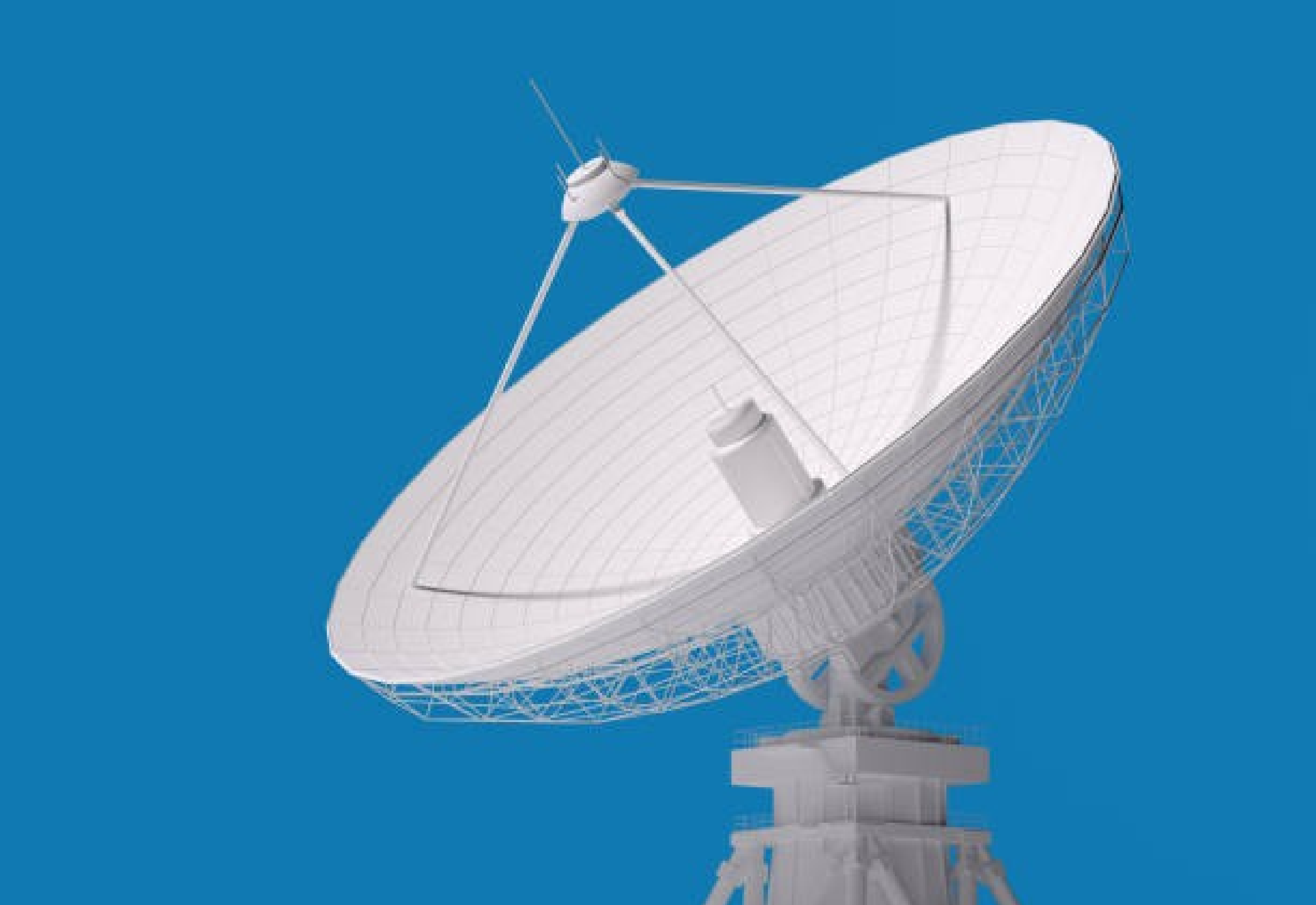Subsection 13.1.1 The Tools in Astronomy
The Telescope.



1
www.istockphoto.com/search/2/image?phrase=radio+telescopeA telescope is an instrument used to study celestial objects such as stars, planets, galaxies, and nebulae. It works by collecting light that is coming from the distant objects. The telescope mainly consists of a lens or a mirror to collect light, and an eyepiece or a camera to view the image. There are several types of telescopes used in astronomy, such as refracting telescopes [Figure 13.1.1.(a), reflecting telescopes [Figure 13.1.1.(b)], and compound telescopes that combine both. Beside these there are also other kinds of telescope available based on what kind of electromagnetic wave is being gathered. Such as Radio telescopes: Radio telescopes [Figure 13.1.1.(c)] use radio waves to observe celestial objects. They have large dish-shaped antennas to collect radio waves and a receiver to converts the waves into electrical signals which can be analyzed. Radio telescopes are used to study radio emissions from galaxies, quasars, pulsars, and other objects. X-ray telescopes: X-ray telescopes use mirrors to focus and reflect X-rays to create an image. They are typically mounted on satellites to avoid absorption by the Earth’s atmosphere. X-ray telescopes are used to study X-ray emissions from hot gas in galaxy clusters, supernova remnants, and other objects.
The Spectrometer.
A spectrometer is an instrument used to measure the spectrum of light [Figure 7.1.6] emitted by celestial objects. It breaks down the light into its constituent colors (or wavelengths), giving the information of the chemical composition, temperature, and other physical properties of the object. Spectrometers can also be used to study the motion of celestial objects, as the Doppler shift of the spectral lines can provide information about the object’s velocity. Several types of spectrometers such as optical, infrared, ultraviolet, and X-ray spectrometers are being used in astronomy. Spectrometers have helped astronomers discover new elements and compounds in stars and galaxies. It has provided evidence for the Big Bang theory and other fundamental concepts in astrophysics.
Spectrum Analysis.
Blackbody radiation Subsection 7.1.1 is an electromagnetic radiation emitted by an object that absorbs all the radiations incident upon it, and then emits radiation of all kind in thermal equilibrium. The spectrum of blackbody radiation depends only on the temperature of the object [Figure 7.1.2], but not on its composition or other properties. The spectrum of blackbody radiation can be described by Planck’s law, which relates the energy density of radiation at a given wavelength to the temperature of the emitting object. As the temperature increases, the peak wavelength of the spectrum shifts to shorter wavelengths, and the total amount of radiation emitted increases. By analyzing the spectrum of an object, astronomers can determine its composition, temperature, and other physical properties. When a star emits light, it produces a continuous spectrum of blackbody radiation that is modified by absorption lines caused by the presence of specific chemical elements in the star’s atmosphere.
